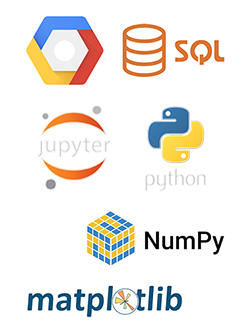
BRENT MARTIN
Data Scientist/ Business Intelligence Analyst / UI/UX Designer

Data Scientist/ Business Intelligence Analyst / UI/UX Designer
Navigate to Explore Hypotheses, View Visualizations and Dashboards, and Open Jupyter Notebooks:


PROJECT GLOSSARY:
COMING SOON – follow links to read informative blog posts:

The dual-axis line chart successfully compares the Nonfarm Employment Ratio (PAYEMS ratio) with the Employment-Population Ratio (LNU02300000). Here’s what you can observe:
Observations:
This plot provides a useful visual representation of how these two metrics have evolved over time, and it can be helpful for analyzing the impact of economic policies and external shocks on employment and labor market participation.
Interpretation:
The Pearson correlation coefficient between the Nonfarm Employment Ratio and the Employment-Population Ratio is approximately 0.82. This indicates a strong positive correlation between these two variables.
Given this strong correlation, it suggests that as the Nonfarm Employment Ratio increases, the Employment-Population Ratio tends to increase as well, and vice versa.
Key Takeaways: R-squared Value: The R-squared value is 0.677, meaning that approximately 67.7% of the variance in the Employment-Population Ratio can be explained by the Nonfarm Employment Ratio. This suggests a strong relationship between the two variables.
P-value for Nonfarm Employment: The P-value associated with the PAYEMS_ratio coefficient is 0.000, which is much less than 0.05. This indicates that the relationship between the Nonfarm Employment Ratio and the Employment-Population Ratio is statistically significant.
Coefficient: The coefficient for PAYEMS_ratio is 0.4300, meaning that for every unit increase in the Nonfarm Employment Ratio, the Employment-Population Ratio increases by approximately 0.43, holding other factors constant.
Intercept: The intercept value of 42.3039 suggests that when the Nonfarm Employment Ratio is zero, the Employment-Population Ratio would be around 42.3%. However, in a real-world context, a Nonfarm Employment Ratio of zero isn’t feasible, so the intercept is more of a mathematical artifact in this scenario.
This project involves a comprehensive economic analysis using data from the Federal Reserve Economic Data (FRED) database. The study focuses on identifying and testing various economic hypotheses related to employment, GDP, inflation, and other key economic indicators. By leveraging historical data, the project aims to uncover patterns and relationships that can inform future economic predictions.
One of the core hypotheses explored in this study, Hypothesis 1, investigates the relationship between nonfarm payroll employment (PAYEMS) and the unemployment rate over time. The analysis considers how employment trends impact overall economic health, particularly during recession and recovery periods.
Client : N/A (Personal Project)
Date : August 2024
Category : Economic/Financial
Data Scientist/ Business Intelligence Analyst / UI/UX Designer